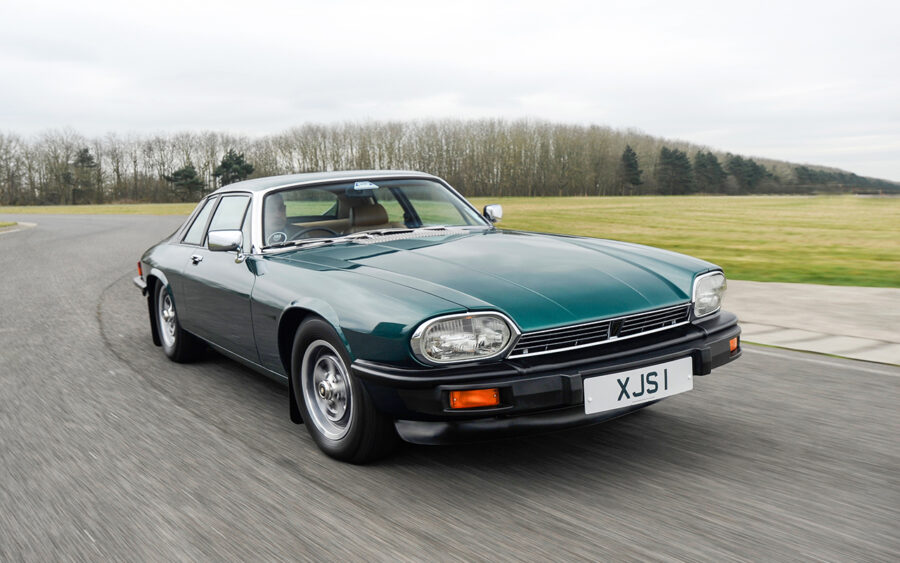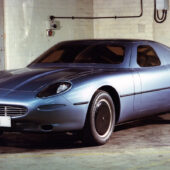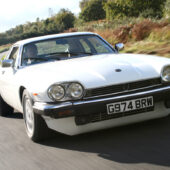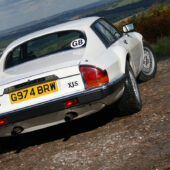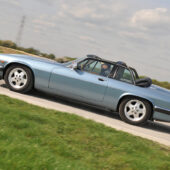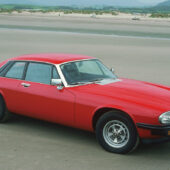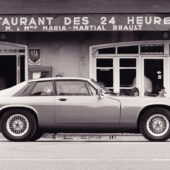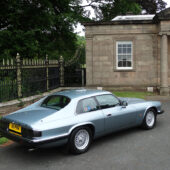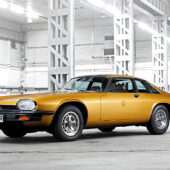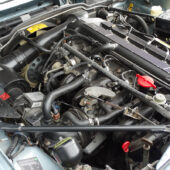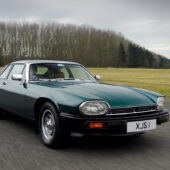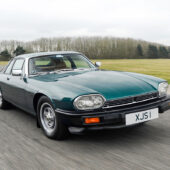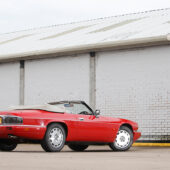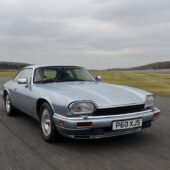With a protracted career that spanned some 24 years, the Jaguar XJ-S went from uncertain beginnings to much-deserved triumph in later life
Words: Paul Wager
Depending on your own personal perspective, the XJ-S marks either Jaguar’s finest hour or its greatest folly, although even the car’s detractors must concede that its 21-year career makes it one of the Coventry firm’s most successful models. Indeed, the Jaguar XJ-S was only narrowly beaten in terms of longevity by the ‘Series’ XJ saloon, which clocked up 24 years thanks to production of the XJ12 continuing into the early 90s. Like many a car that went well past its perceived sell-by date, however, the early XJ-S was a very different beast from the last-of-the-line version – much like Jaguar itself.
The XJ-S survived four distinct eras at Jaguar, having been conceived under William Lyons’ control of an independent firm. Pre-production development and the car’s launch occurred during the BMH/BL era, with the car enjoying greater success in the brief 1984-89 period of independence, as well as surviving into the Ford era. Indeed, instead of being canned as an obsolete relic by the Blue Oval, the XJ-S was given not only a stay of execution but a massive investment to ensure it finally fulfilled its potential.
Glorious triumph though the E-type was, Jaguar knew it would eventually need replacing, and by the late 60s its curves were ageing, albeit gracefully. Under the skin, it continued to improve and, although the Series III cars are often regarded as the poor relation, they are in many ways technically superior to their forebears, thanks to their longer wheelbase and the massive firepower of the mighty V12 engine.
In fact, Jaguar had been exploring the possibility of an E-type replacement long before the Series III was unveiled, with studies for a successor being created as early as 1967. Developed under model code XJ21, the project is widely regarded as being at least partly inspired by a design worked up by a young Jaguar apprentice of the time, Oliver Winterbottom. With his aspirations to join the styling department, Winterbottom had entered a competition organised by design house Bertone called the Concorso Grifo d’Oro and in August 1966 was astonished to discover that he had won the prize.
Promoted to staff stylist, Winterbottom was then formally engaged on the project to produce an E-type replacement, providing design support under project leader Malcolm Sayer. The brief required using the then newly-developed V12 engine as well as a V8 that was in the works, but the project would always play second fiddle to the need to put the XJ6 into production, with resources correspondingly compromised.
When Jaguar became part of British Leyland in 1968, the model range was rationalised and it was decided that it would be Triumph who would produce a so-called small sports coupé. As history reveals, that decision ultimately led us to the alluring but flawed Triumph Stag of 1970, while XJ21 was cancelled in favour of the V12 E-type.
Perhaps more relevant was another Bertone project, a show car for the 1967 Earl’s Court Motor Show, created with assistance from Jaguar and sponsorship from the Daily Telegraph. The concept, styled by Marcello Gandini, was given the name Pirana and bore a striking similarity to the Lamborghini Espada (another Gandini design) that would be unveiled the following year. Built on the bones of an E-type 2+2, the Pirana is cited by former Jaguar designer Nick Hull as an influence on the project codenamed XJ27, which was destined to reach production as the XJ-S. Interestingly, Jaguar historians date the XJ27 project as having started while XJ21 was still in progress, with Sayer having discussed an XJ-based 2+2 sports car with William Lyons in September 1968.
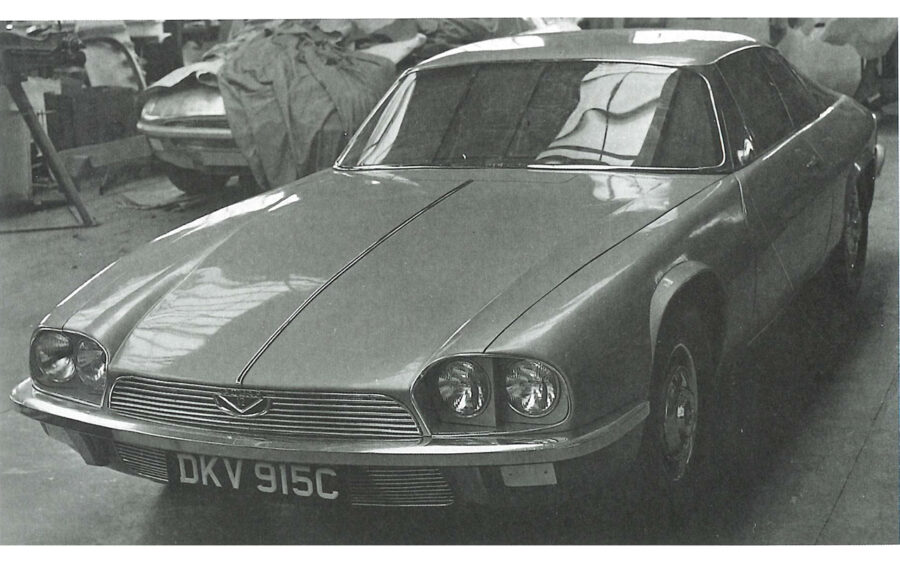
Rather than looking back towards the E-type era, Sayer’s proposal was to create a modern-looking car in the Italian style, low and wide. Both Sayer and Winterbottom produced proposals for the car, with Sayer’s using pop-up lamps and a Jensen-style glass hatch, while Winterbottom had gone for a fastback style. It was Sayer’s design that provided the essential basis of the production car, but his untimely death in 1970 meant that it would be left to the rest of the team to finish off the details, inevitably aided and abetted by Lyons himself. The glass hatch had already been questioned on engineering grounds owing to its complexity, and before Sayer’s passing had been replaced by the flying buttresses that would become a signature XJ-S feature.
Work proceeded during 1970, with the pop-up lamps and sleek, low nose of the early proposals being replaced by a conventional grille and large headlamps. By then, Jaguar was under pressure to release body engineering specifications to Pressed Steel Fisher in order to meet the projected launch date of March 1973. The final drawings were produced in December 1971, although they’re notable for the lack of bumpers, which were still missing on the first running prototypes that would be completed in 1972. Early styling models used slender chrome items with neatly integrated overriders, but the production cars would feature chunky rubber-trimmed items which met current regulations but were unloved by the design teams at Jaguar.
Winterbottom himself had moved to Lotus in 1971, meaning that the final production version of the XJ27 did have something of a ‘designed by committee’ background. The car did indeed use the platform of the original XJ saloon – XJ4 in Jaguar parlance – albeit shortened by six inches and with the front suspension moved forwards to keep the proportions neat.
Unsurprisingly, the launch date of the XJ-S slipped to September 1975, with the car making its public debut at the Frankfurt show. Initially the ‘range’ was slim, with only the 5.3-litre V12 engine being offered, although now on Lucas fuel-injection rather than the E-type’s carburettors, with the only major option being the choice of automatic or manual transmission.
In reality, the manual was offered only because there were stocks of the four-speed ’box left over from Series 3 E-type production, and the Borg Warner automatic suited the car so much better. As with so many Jaguar products before it, the USA was a prime market and clearly the self-shifter would be the more popular there. Indeed, the manual was dropped shortly after launch (with just 352 produced) and wouldn’t return until the appearance of the six-cylinder cars, while in 1977 the Borg Warner auto was replaced by a General Motors TH400, which featured an alloy case and so was usefully lighter than the previous iron unit.
Although the XJ-S was a big jump forwards from the E-type in many ways, it left many onlookers slightly bewildered by the change of direction from sports car to grand tourer. One thing nobody questioned, however, was the car’s performance, with the launch-spec V12 being good for 285bhp and a crushing 294lb ft of torque, which gave it 150mph pace – the newer car’s better aerodynamics making it faster than the last of the E-types, despite its extra weight.
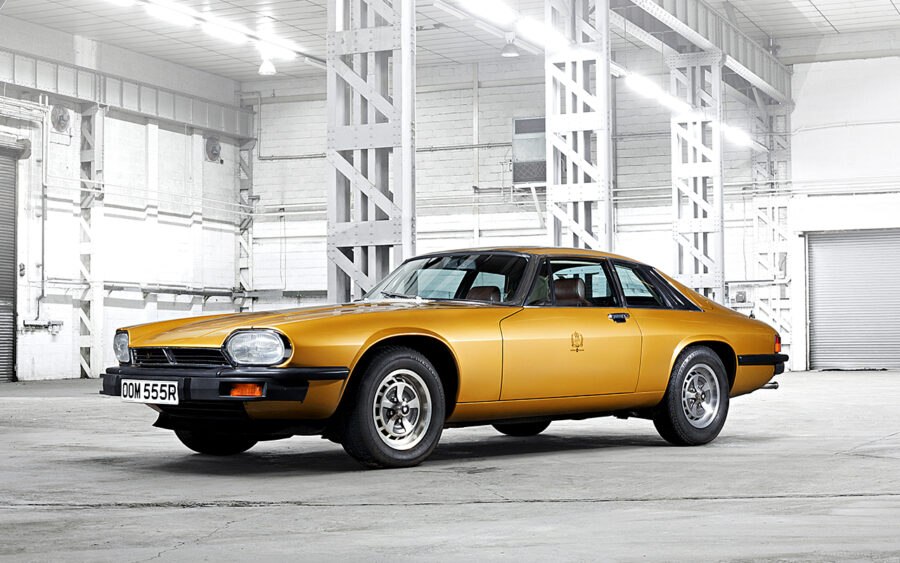
The thing that really dented the XJ-S’s appeal though, wasn’t a rose-tinted comparison with its forebear or even the competition from BMW or Ferrari, but global oil prices. The car was launched into the aftermath of the 1973 OPEC crisis that had lasted until 1974, with the price of crude quadrupling during that time. It was this crisis that had resulted in the USA’s blanket 55mph speed limit, and although its immediate effects had begun to ease by the time the XJ-S was unveiled, the car’s massive thirst was still an issue. In urban or spirited driving, single-figure miles per gallon was a reality, while a best of around 14mpg was as good as the green LED screen of a Casio calculator would ever provide.
A partial solution came in 1980 thanks to work by Swiss engineer, Michael May. The original V12 had used a flat-faced cylinder head with the combustion chamber in the piston, but swapping to a more conventional arrangement – and creating a more efficient head casting at the same time – improved efficiency to the point where fuel consumption was up to a quoted 22mpg. That may sound pretty thirsty, but it represented a 57% improvement, which explains the HE for ‘High Efficiency’ tag adopted by the revised V12 cars.
The XJ-S was treated to a minor facelift at the same time, gaining higher gearing (a 2.88 diff ratio against 3.07) and a move from six-inch to 6.5×15 wheels with 215/70 tyres. The suspension was revised, the steering was sharpened up and the stark interior – which was so modern at launch – was given a more traditional wood and leather makeover.
Clearly though, twin fuel tanks or not, a V12 engine of that size and thirst was always going to limit the car’s appeal to high-mileage executives, and so the addition of a straight-six engine in 1983 was a no-brainer. Rather usefully, a replacement for Jaguar’s long-serving XK engine had been developed for the forthcoming XJ40 saloon and could therefore make its debut in the XJ-S. Initially a 3.6-litre unit producing 225bhp, it was available only with a five-speed manual gearbox and provided a 145mph top speed. Acceleration was down on the V12, but that AJ6 motor did give the car 29mpg potential.
The AJ6 was offered initially only in the newly-developed XJ-SC cabriolet model, developed in response to demand from US dealers for an open car. The lower volumes of the newcomer allowed the firm to test the new engine in the real world before committing to its use in the much larger production volumes demanded by the XJ40, and Sir John Egan recalls that it proved a fortuitous move. In his autobiography Saving Jaguar, Egan relates that at assembly volumes above two or three per day, the units proved unacceptably rough, needing hand-finishing. Eventually though, careful attention to tolerances and engine mountings sorted the problems, and the powerplant was ready for its saloon debut in the XJ40.
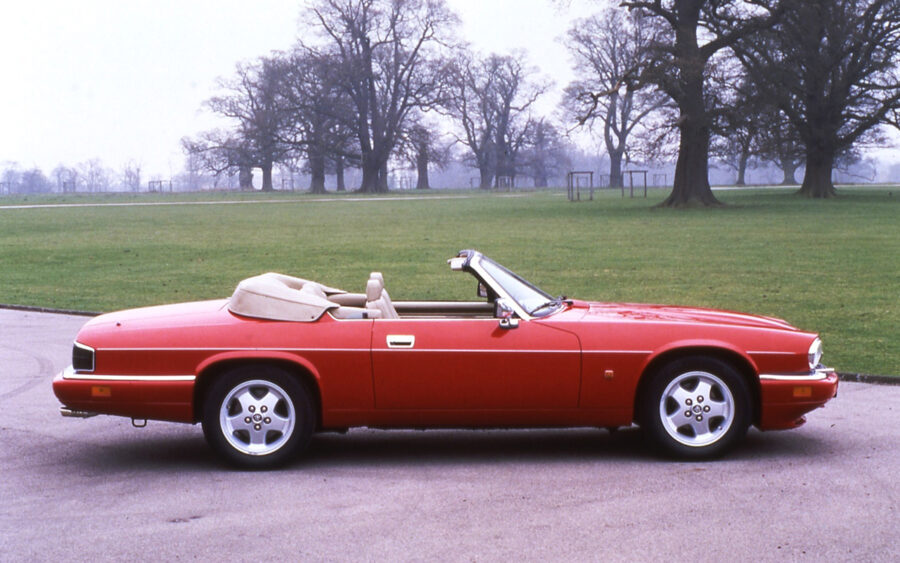
The cabriolet would prove to be short-lived, of course, as Jaguar had also enlisted the help of Karmann to produce a full convertible XJ-S, which was launched in 1988. Without those flying buttresses the styling was transformed, and the car immediately looked more modern. Offered only with the V12 engine at first, it made an ideal package for the US market – and was to have a major impact on XJ-S sales for the final part of the long-running car’s career.
In 1987, an optional Sportspack was offered to XJ-S buyers, using stiffer springs (uprated by 43% at the front), uprated dampers and a larger front anti-roll bar. Paired with a stiffer steering rack mounting bush and reduced power assistance, the cars sat on 6.5×15 cross-spoke BBS rims and 235/60 Pirellis. Initially a cost option on the 3.6-litre cars, it was then standardised on all cars from March 1988 – the same year that the suspension and hub assemblies were revised to accommodate ABS braking.
The AJ6 engine was enlarged to 4.0-litre spec in 1989, resulting in a 223bhp output that considerably narrowed the performance gap with the V12. It was offered with a choice of ZF4HP automatic or a new Getrag five-speed manual, an upgrade of the previous unit, with the gear lever moved 15mm backwards for better positioning.
It was at this point that Ford entered the picture and, although critics feared the quality of the product would suffer in the new American owner’s quest for increased volume and profits, quite the reverse happened in many ways – as demonstrated by the XJ-S. As early as 1985, a facelift proposal had been worked on under lead designer Fergus Pollock and given the title XJ87 (coupé) and XJ97 (convertible), but had never seen the light of day owing to lack of budget. The brief behind the facelift had been to increase the appeal of the car in the US market, and for Ford it was also a quick win in terms of new product. Costing £50 million, the facelift involved significant bodyshell changes, with some 180 individual panels either new or revised – something that was required owing to the age of the tooling itself, as well as to improve rigidity and quality.
It was a neat piece of work, as impressive for its subtlety as anything else, and at a simple glance the car looked to have received only detail changes. In fact, the twist angle of the rear buttresses had been changed and a black mask around the rear side windows allowed larger glass panes to be used without changing the inner structure. The boot lid was also shortened, the sills flared out at the trailing edge and the windscreen was a flush-fitting bonded-in item. The bonnet panel was also standardised across the range, with the V12 cars sharing the bulged panel previously used for the six-cylinder cars. On the inside, meanwhile, many XJ40 parts were used, and the old vertical instruments were replaced by conventional analogue dials. The facelifted car, now having lost its hyphen to become simply XJS, was launched in 1991 with the similarly revised convertible arriving in 1992 and benefiting from a revised rear pan structure, which allowed small rear seats.
In May 1993, the long-serving V12 was stroked from 5.3 litres to 6.0 litres – not to be confused with the similar-capacity TWR development of the engine – and from June 1994 the AJ6 engine in the 4.0-litre car became the much-improved AJ16. The 6.0-litre was mated to a GM 4L80-E four-speed automatic with a lock-up overdrive top gear and switchable Sport mode. At this point, buyers could specify a softer Touring suspension set-up than the Sportspack, which had been standard since 1988. More importantly for owners working on these cars today, the inboard rear brakes were moved to a conventional outboard position. On the outside, all the cars gained colour-coded plastic bumpers.
The Jaguar XJS (the facelift lost the hyphen of the original car) received standard airbags from early 1994, the passenger bag replacing the glovebox and involving a redesign of the lower dashboard area. The changes coincided with the addition of body-coloured bumpers on the 4.0-litre models, while the V12 cars retained the brightwork.
A run-out edition badged as the Celebration arrived in 1995, featuring diamond-turned alloy wheels, embossed seats and a wood-rimmed steering wheel. It was launched to mark twenty years of Jaguar’s longest-running sportster, which would finally cease production the following year after worldwide sales of more than 115,000. Despite what you might read about the XJ-S’s apparent lack of success in the market, its production figure was far in excess of what the E-Type had achieved.

Jaguar XJ-S timeline
1967
First study for a Jaguar E-type sucessor created, known internally by model code XJ21
1968
Jaguar becomes part of British Leyland and range is rationalised; Triumph takes over small sports car production for the group and XJ21 project is cancelled
Jaguar XJ27 project begins as a study into a XJ-based 2+2 sports car, taking inspiration from the Bertone Pirana show car first shown at the 1967 Earls Court Motor Show
1970
Original XJ27 designer Malcolm Sayer dies; final details left to the rest of the team under William Lyons’ eye
1971
Final design drawings produced in December, sans bumpers
1972
First running XJ27 prototypes completed
1975
Production Jaguar XJ-S launched at the Frankfurt Motor Show in September in 4.3-litre V12 guise

1977
BorgWarner Model 12 automatic transmission replaced with GM Turbo-Hydramatic 400 unit
1981
Jaguar XJ-S HE arrives with high-efficiency V12 engine; power increased to 295hp. Subtle styling and trim changes also feature
1983
AJ6 straight-six arrives, initially only in the the XJ-SC drop-top as something of a test-bed for the unit’s full-scale roll-out in the Jaguar XJ40
1987
Optional Sportspack was offered to XJ-S buyers, using stiffer springs (uprated by 43% at the front), uprated dampers and a larger front anti-roll bar, among other updates
1988
Sportspack specification becomes standard across the range
XJR-S model introduced, developed by JaguarSport
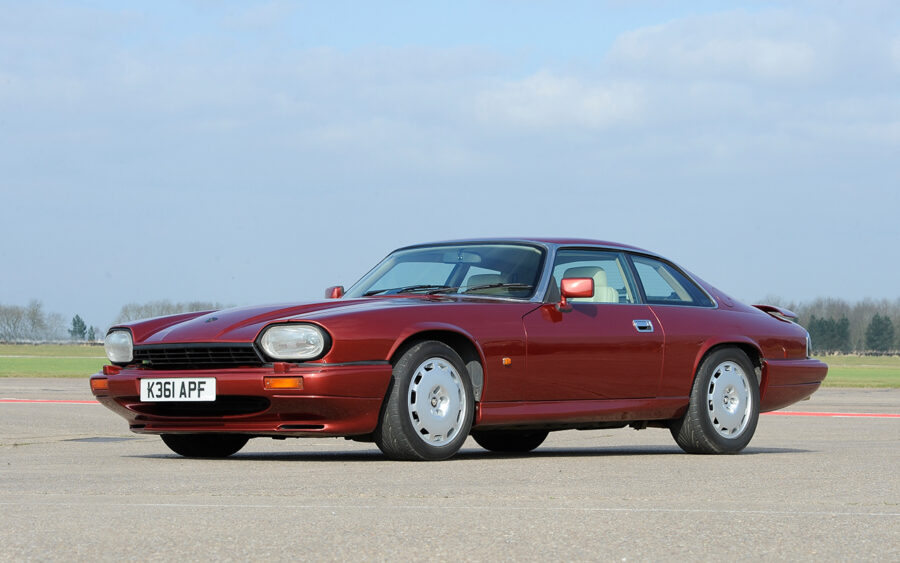
1989
AJ6 engine enlarged to 4.0 litres in 1989, resulting in a 223bhp output
1991
Facelifted XJ-S arrives, rebadged as XJS, with 4.0-litre AJ6 engine, outboard brakes and other detail changes
1992
V12 engine enlarged to 6.0 litres
1994
AJ6 engine updated to AJ16 specification
1995
XJS Celebration run-out model arrives to mark 60 years of Jaguar
1996
Jaguar XJS discontinued
1997
Jaguar XK8 arrives as the XJS’ successor

